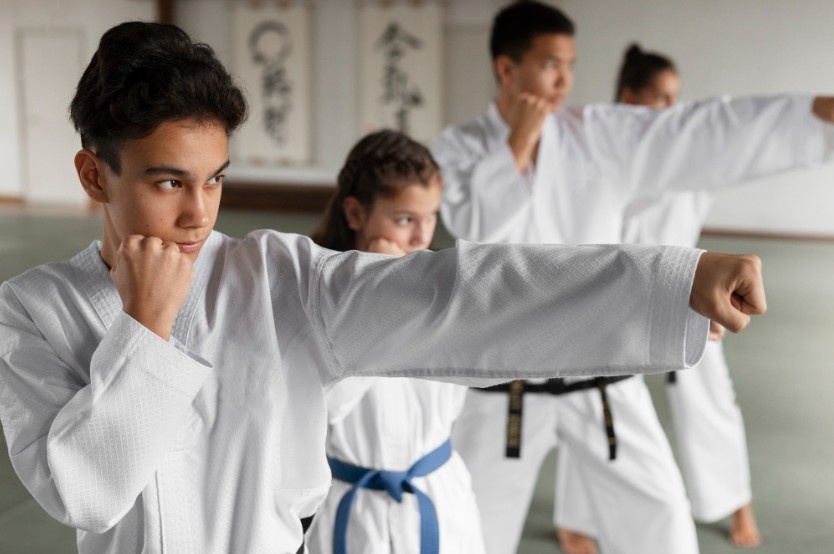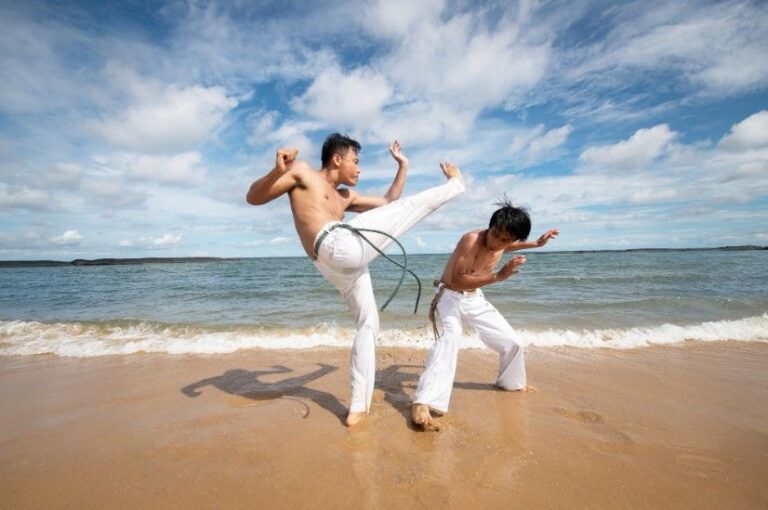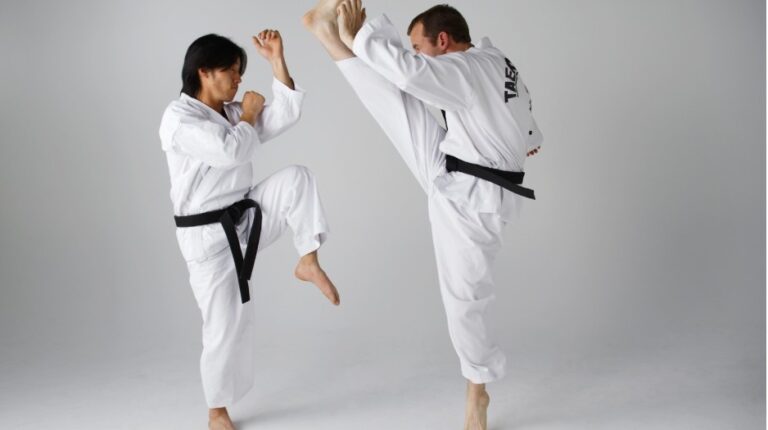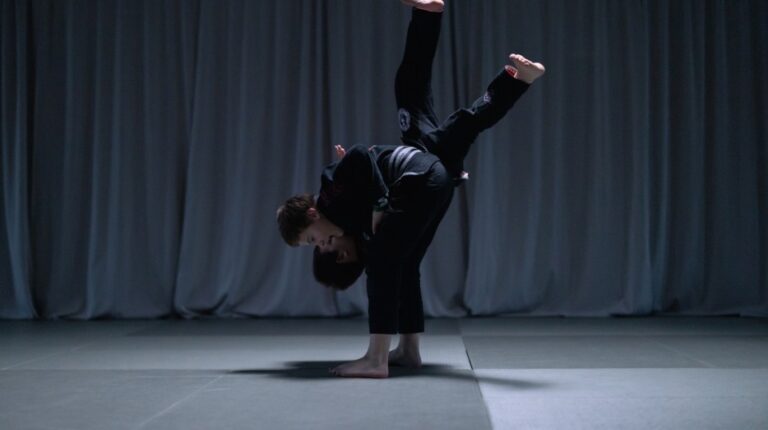When I first stepped into the world of Taekwondo as a young, wide-eyed student, I had no idea that there were different styles of Taekwondo. All I knew was that I wanted to learn how to kick high and punch hard. It wasn’t until much later that I learned about the two major organizations that govern the sport: the International Taekwondo Federation (ITF) and the World Taekwondo Federation (WTF), now commonly referred to as World Taekwondo (WT).
Each style offers a different approach to the same art, and as I moved through my black belt ranks, I found myself often asked by students, “Lauren, which one is better?” The short answer? There’s no “better” per se, but there’s a right fit for everyone. So, let’s break it down, explore the differences between ITF and WT Taekwondo, and help you figure out which might be best for you.
What’s the Difference Between ITF and WTF Taekwondo?
At the core, ITF and WT Taekwondo are based on the same principles and techniques. Both focus on kicking, punching, and blocking, and share similar forms (known as “poomsae” or “tul”), but they diverge significantly when it comes to their governing bodies, training styles, and competition rules.
ITF: Traditional Taekwondo
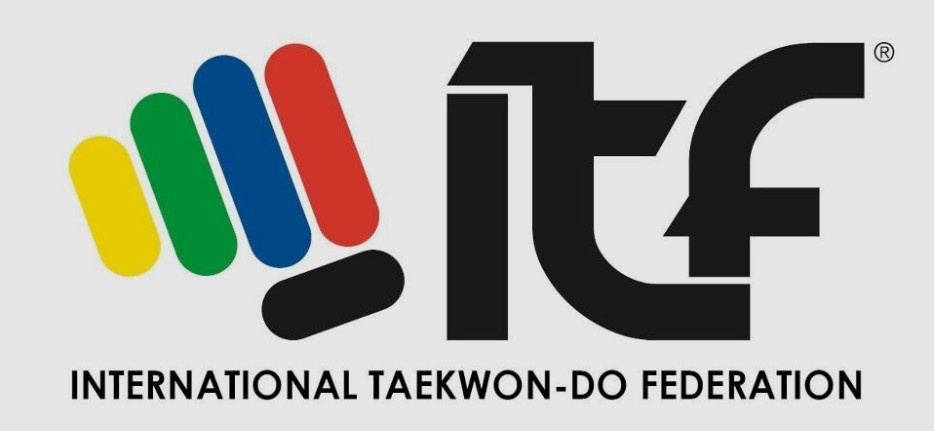
Credit: ITF
The International Taekwondo Federation (ITF) is often referred to as the “traditional” side of Taekwondo. Founded by General Choi Hong Hi in 1966, the ITF emphasizes the martial art’s original roots, which include a deep connection to Korean culture and a focus on self-defense and traditional forms. The ITF also puts a heavy emphasis on the spiritual aspects of Taekwondo, aiming to instill respect, humility, and discipline in its practitioners.
Key Characteristics of ITF Taekwondo:
- Traditional Forms: ITF practitioners perform traditional patterns or forms (tuls), which are highly detailed and emphasize balance and symmetry.
- Focus on Self-Defense: The ITF’s training places a significant emphasis on self-defense techniques that are applicable in real-world situations.
- Breaking Techniques: ITF tends to emphasize board breaking and breaking techniques more than WT.
WT: Sport-Oriented Taekwondo

Credit: WT
The World Taekwondo Federation (WT), now simply called World Taekwondo, governs the sport as it’s seen in the Olympics. While it also traces its origins back to traditional Taekwondo, WT has evolved with an emphasis on sport and competition, especially in sparring. It was established in 1973 to standardize Taekwondo for international competition, which ultimately led to its inclusion in the Olympics.
Key Characteristics of WT Taekwondo:
- Sport Focus: WT prioritizes sparring and competition, with an emphasis on agility, quickness, and athleticism.
- Modern Forms: While still utilizing traditional patterns (poomsae), the emphasis is on speed and precision during competition.
- Olympic Taekwondo: The WT governs the Olympic Taekwondo events, setting the standard for those looking to compete at the highest levels.
How Do ITF and WT Taekwondo Differ in Training?
Training styles in ITF and WT Taekwondo can feel very different, even though the underlying techniques are similar. Here’s a closer look at how each style shapes its training.
1. Forms (Tul vs. Poomsae)
While both ITF and WT feature forms as part of their curriculum, the two differ in terms of the style and focus of the movements. In ITF, forms (called tul) are more rigid, with deliberate, strong movements designed to cultivate power, precision, and stability. They often involve slower, more controlled movements.
In contrast, WT poomsae are faster, with an emphasis on fluidity, agility, and sharpness. The movement is designed to look more dynamic, with fluid transitions from one position to the next. If you’re someone who enjoys moving quickly and showcasing agility, WT might be more up your alley.
2. Sparring
When it comes to sparring in Taekwondo, some key differences define the experience. ITF sparring is more traditional, focusing on self-defense techniques, control, and tactical movement. The rules are less focused on points and more on demonstrating technique and precision. This makes ITF sparring slower-paced and more strategic.
WT sparring, however, is heavily competition-oriented. It’s fast, explosive, and all about scoring points for controlled kicks, especially the high-flying kicks and head shots. It’s intense, often adrenaline-pumping, and is designed to test an athlete’s athleticism and reaction time, making it a thrilling aspect of the sport for those who thrive in high-energy environments.
How Do You Choose Between ITF and WT Taekwondo?
So, with all these differences in mind, how do you choose between ITF and WT Taekwondo? Here’s a quick guide to help you decide which might be a better fit for your goals and interests.
1. What’s Your Goal?
- Self-Defense and Traditional Martial Arts: If your primary interest is learning a traditional martial art with a focus on self-defense, discipline, and traditional forms, ITF Taekwondo may be the better choice. The deep emphasis on practical techniques and their real-world application can help build solid defense skills.
- Competition and Sport: If you’re more interested in the sport aspect of Taekwondo, especially Olympic-style sparring, WT Taekwondo will likely appeal to you more. WT’s sparring style is fast-paced and exciting, offering opportunities to compete in high-level tournaments and the Olympics.
2. Are You Focused on Traditionalism or Modernity?
- Traditional Training: If you’re drawn to the traditional roots of Taekwondo, ITF offers a more classical experience. The focus on deeply understanding every aspect of the art, from forms to philosophy, may resonate with you more.
- Modern and Sport-Oriented Training: If you’re looking for a blend of martial arts and athletic competition, combined with modern training techniques, WT is the right fit. It’s all about refining your skills to compete at the highest levels.
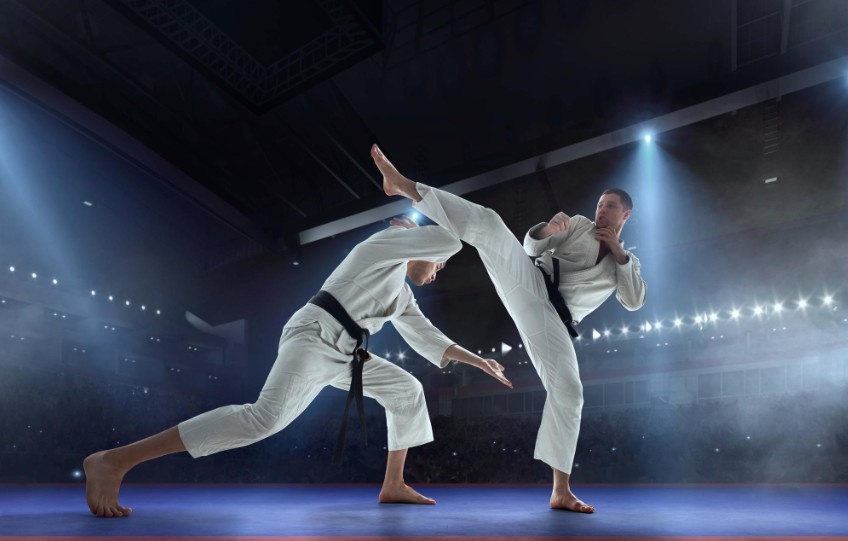
How to Make the Most of Your Taekwondo Journey
No matter which style you choose, the key to success in Taekwondo is consistency, dedication, and a passion for learning. Whether you’re in an ITF dojang or a WT school, focus on your own growth. Training in Taekwondo isn’t just about earning belts; it’s about developing personal strength, discipline, and respect for others.
1. Set Clear Goals: Define what you want to achieve—whether it’s mastering forms, excelling in sparring, or improving your self-defense skills.
2. Practice Regularly: Consistency is key in any martial art. Aim for at least two to three sessions a week to improve technique.
3. Stay Open-Minded: Even if you choose one style, don’t be afraid to learn from the other. Both ITF and WT offer valuable skills that can complement each other.
Your Taekwondo Journey Awaits!
Choosing between ITF and WT Taekwondo depends on your personal interests and goals. For some, ITF’s focus on tradition and self-defense offers the depth and philosophy they crave. For others, the sport and competition-focused training in WT provides the thrill and excitement of testing their skills against others.
Ultimately, Taekwondo is a journey of personal growth, discipline, and self-improvement. Whether you’re looking to defend yourself, compete at the highest levels, or simply challenge yourself physically and mentally, both ITF and WT Taekwondo can help you achieve greatness.





